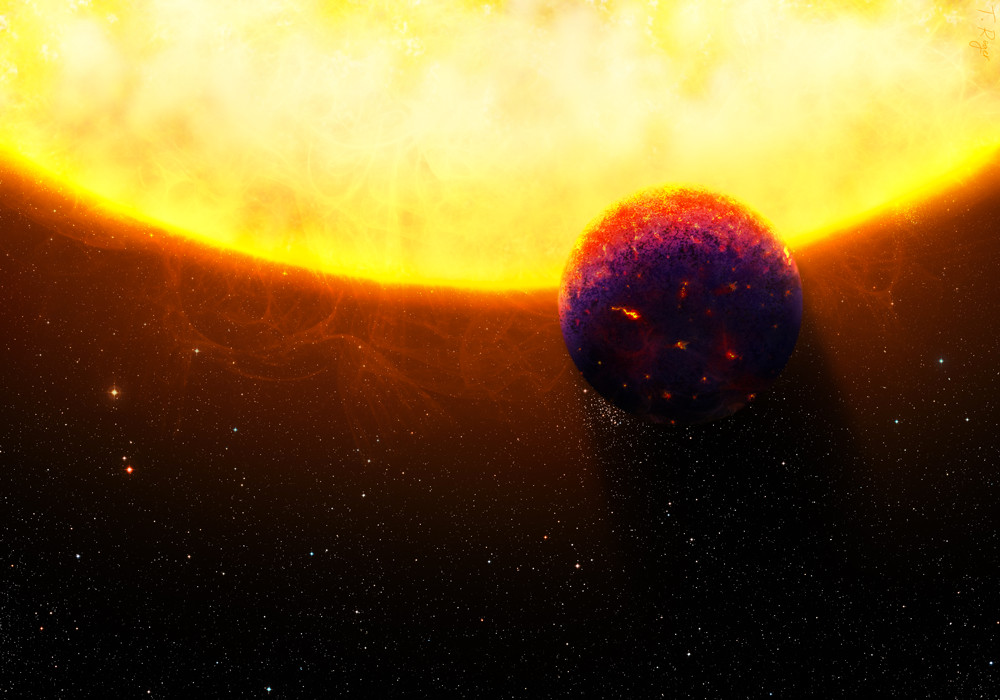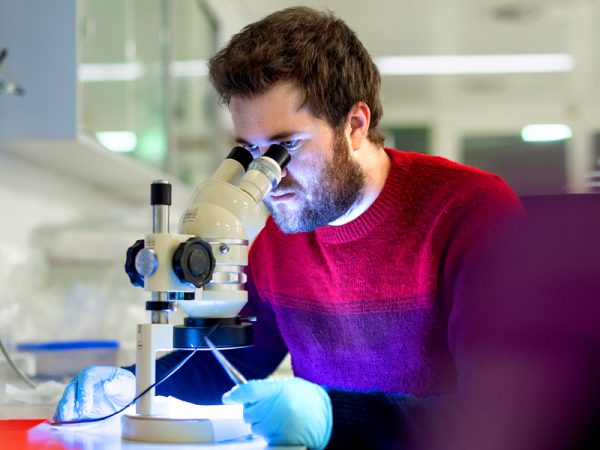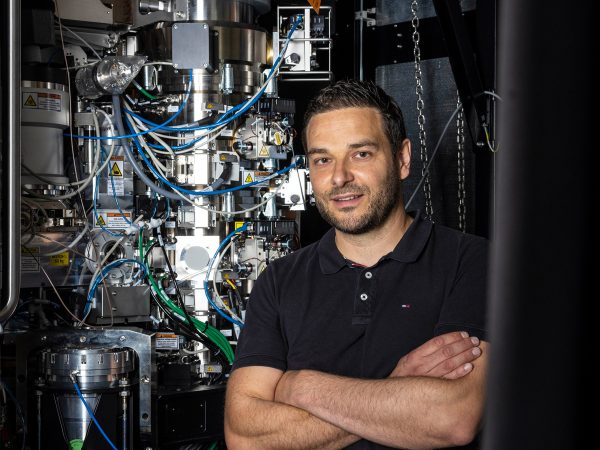Understanding distant worlds

© ETH Foundation / Daniel Winkler
Understanding distant worlds
Caroline Dorn is exploring what exoplanets are made of. In our interview, the ETH professor explains why she expects major progress to be made in her field of research relatively soon.
You’ve been working on extrasolar planets, i.e. planets outside our solar system, for about ten years now, since this year as an ETH professor. What’s your story?
CAROLINE DORN – Originally, I started off in earth sciences. This means that up to and including my doctorate, I devoted my attention to geophysical phenomena, like earthquakes and water in bedrock. When, in 2013, the University of Bern was looking for someone from the field of geophysics to research exoplanets, I applied and got the job. Exoplanet research is still very young. Once astronomers had realised that they could find extrasolar planets, there was suddenly great demand for expertise from all kinds of other fields. That’s how my career took a change of direction and I came to this field. On the first day of my postdoc, I first had to look up the definition of “planet”.
How does it benefit you today that you had a scientific career before getting involved in exoplanets?
I think it’s done me good to get to know different disciplines and their particular scientific cultures. It’s like being able to speak different languages. This is exactly what’s needed if you want to work on an interdisciplinary basis. It’s easy to talk about “interdisciplinarity”, but to put it into practice, you have to take time and really immerse yourself in another discipline.

© Thibault Roger
Speaking of interdisciplinarity – why does the Centre for Origin and Prevalence of Life at ETH place so much weight on this?
Exoplanet research – and research into the origin of life as a whole – is an ideal field for creating links between disciplines which, in turn, enables major advances to be made more quickly. We’re lucky in that the Centre provides a unique environment for this dynamic field and great potential for making flying leaps in our findings.
What are you looking for in your research?
I want to find out what distant worlds are made of, as the composition of a planet tells us things about its origin and evolution. For example, I want to discover how much water can be found there, how big the iron core is or what the atmosphere is made of. Water is an important building block for life on planets, so I’m also interested in where and in what form it’s found. Is it possible for oceans of liquid water to exist there long-term? To answer these questions, I work with existing data on the mass and size of planets. Our models also use information on how materials behave at high pressures and temperatures. In other words, I delve deep into the inner lives of exoplanets.
To date, over 5000 exoplanets of all different kinds have been identified. Where does your particular focus lie?
Of the planets we can see with today’s technology – which represent only the tip of the iceberg – most are larger than Earth and smaller than Neptune. Known as super-Earths and mini-Neptunes, these are the ones I’m focussing on. They’re particularly interesting because they don’t feature in our solar system yet are very common in other systems. Does that indicate that our solar system is somehow special? I’d like to find out what super-Earths and mini-Neptunes are made of. In the past, the models used in exoplanet research were quite simple: we worked on the basis that different layers of gas and rock are separate from each other and chemically inactive. However, in the last five years we’ve realised that these worlds are much more complex: water and other gases are not completely separate from the rocky interior. In my research group, the aim is to build more complex models that connect a planet’s atmosphere with its deep interior. In our work, Earth provides us with so much valuable information, as it’s by far the planet we know best. We can use the measurements taken here to check our models. This makes Earth both a benchmark and a source of inspiration.
Our great interest in exoplanets is related to the fact that we humans would like to know if there’s life elsewhere in the universe. Tell us what you see in the crystal ball!
I’m sure we’ll find life on other planets – at least indicators of a biosphere. I could imagine, for example, that we’ll find a gas composition whose imbalance must be of biological origin. Or that we’ll discover in the spectrum of an exoplanet back radiation that’s typical for plant life. However, I rule out the possibility of us ever travelling to exoplanets. With today’s technology, it would take 100,000 years to reach the next exoplanet. So, you could say that if we’re never going to set foot on an exoplanet, who cares? But just the thought that I may one day be able to point to something and say to my children, “there’s probably life there!” is so fascinating that this is more than enough incentive.


